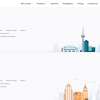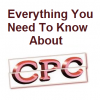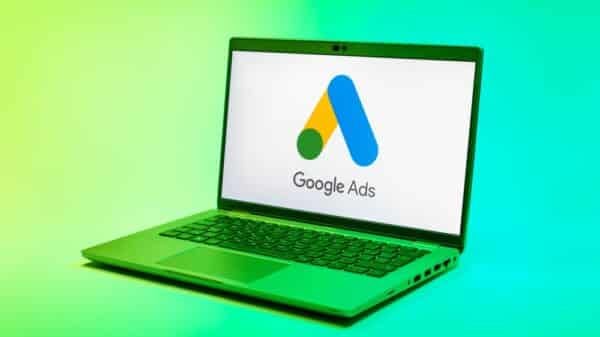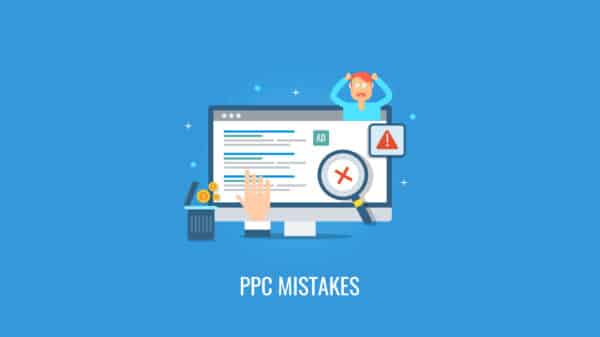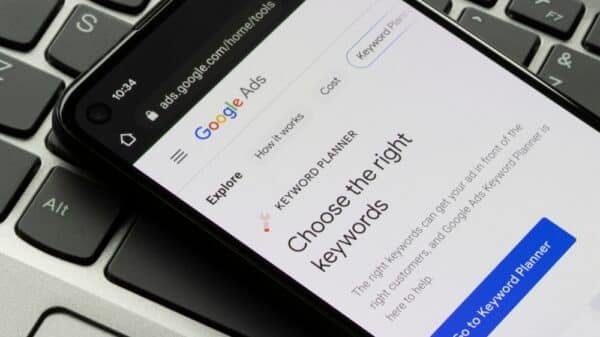AI is transforming the world of Pay-Per-Click (PPC) advertising.
According to Goldman Sachs, AI is projected to generate $200 billion in marketing value by 2025, making it one of the most influential technologies in the industry. From automated bidding to dynamic keyword insertion, AI is streamlining every facet of PPC advertising—including the creation of ad copy.
AI-driven ad copy tools are reshaping the landscape of copywriting by helping marketers craft persuasive ads more quickly and at scale. Platforms like Jasper, Copy.ai, and Anyword offer advanced features to generate, test, and fine-tune ad copy, providing unparalleled efficiency and performance. However, despite the power of these tools, the human touch remains crucial for crafting ads that connect emotionally and authentically with the audience.
Let’s explore how marketers can use AI to write high-converting ads while keeping that essential human element intact.
Key Advantages of AI-Powered Ad Copy
Why should marketers turn to AI for ad copy? The benefits are considerable:
- Increased Efficiency: AI tools can produce numerous ad variations in seconds, saving valuable time and enabling marketers to focus more on strategy. For example, Jasper can generate high-quality Google Ads headlines and descriptions in minutes, freeing up time for campaign analysis.
- Improved Targeting: AI analyzes vast amounts of data to precisely identify audience segments. Tools like Anyword go a step further by using predictive analytics to ensure the copy aligns with your target audience’s needs.
- Enhanced Performance: AI excels in A/B testing, enabling marketers to identify the best-performing ad copy. By automating this process, AI tools drive higher conversion rates and a better return on investment (ROI).
Imagine being able to create hundreds of ad variations in the time it once took to write just one. That’s the power AI brings to PPC advertising.
AI Tools for PPC Copywriting
Marketers now have access to a growing number of AI tools tailored specifically for ad copywriting. Each tool offers distinct features designed to meet various needs:
- Jasper: Provides templates for Google Ads, analyzes existing ads, and offers improvement suggestions.
- Copy.ai: Generates ad copy in a range of tones and styles, allowing marketers to test different voices and find the ideal match.
- Anyword: Uses predictive analytics to forecast the performance of ad copy across different audience segments, offering a data-driven approach to optimization.
Tool-Specific Techniques
- Prompt Engineering: Craft specific prompts for the AI. For example, you could ask Jasper to write a Google Ad for [product/service] targeting [audience] with a focus on [unique selling proposition].
- Customization: Refine the AI-generated output to match your brand’s tone and messaging.
- Iterative Feedback: Test multiple prompts to fine-tune the AI’s responses and get the best results.
Breaking Down Ad Copy Performance: Insights from a 30-Day Google Ads Study
In a recent 30-day Google Ads search campaign, I tested different ad copy approaches, and the results pointed to a clear winner.
ChatGPT, when combined with human input, outperformed all other methods, achieving the highest click-through rate (CTR) of 10.87%, generating the most leads (169), and maintaining the lowest cost-per-lead (CPL) of $5.36. This method even beat human-written copy, which had a CTR of 10.92% and a CPL of $5.75. Jasper came in second with a CTR of 9.33% and a higher CPL of $11.33. These results show that combining human creativity with AI-generated content can lead to superior performance in Google Ads campaigns.
Humanizing AI-Generated Ad Copy: The Essential Human Touch
Though AI-generated copy is efficient, it often lacks the emotional intelligence needed to make a real connection with audiences. Here’s how to infuse human warmth into AI-generated content:
- Infuse Emotional Appeal: Use storytelling and vivid language to forge an emotional connection. For instance, instead of simply saying, “Our software helps businesses grow,” try, “Frustrated with slow growth? Our software gives you the tools to manage sales leads.”
- Vary Sentence Structure: Mix up short and long sentences and use an active voice to make the copy more dynamic and engaging.
- Incorporate Figurative Language: Metaphors, similes, and analogies can add depth and creativity, helping your ad copy stand out.
- Remove AI Tics: AI often relies on certain phrases or structures that can seem repetitive. Swap these out for concise, impactful language.
- Build an AI Persona: Train AI to align with your brand’s voice by providing examples of your best-performing copy and tone guidelines. By integrating these human elements, marketers can turn generic AI-generated copy into ads that genuinely resonate with their audience.
Prompt Engineering: Crafting Effective Prompts for Optimal Results
Creating the right prompts is key to getting the most out of AI tools. Think of prompt engineering as giving clear, detailed instructions to a junior copywriter—specific directions yield the best results.
Essential Skills for Prompt Engineering
- Understand the Tool: Familiarize yourself with the strengths and limitations of your AI platform. For instance, Jasper excels at short-form copy, while Copy.ai may be more suited for longer ad descriptions.
- Be Specific: Write detailed prompts. Rather than saying, “Write an ad for a fitness product,” try, “Write a Google Ad headline for a fitness tracker targeting young professionals, emphasizing health tracking and style.”
- Iterate and Refine: Don’t settle for the first output. Experiment with different prompts and adjust based on the AI’s responses.
- Design a Persona and Tone: Clearly define the voice and tone you want the AI to adopt—whether it’s friendly, professional, or humorous.
- Leverage Context: Provide the AI with information about your target audience, campaign goals, and product features to guide the output. By mastering prompt engineering, marketers can greatly improve the quality of their AI-generated ad copy.
Ethical Considerations and the Future of AI in PPC
As AI continues to integrate into marketing, it’s essential to address the ethical concerns surrounding its use:
- Bias in AI Models: Make sure the data used to train AI tools is diverse and representative of your audience.
- Transparency: Be upfront with your audience about the use of AI in your ad copy. Consider disclosing when content is AI-generated.
The Future of AI in PPC
- Deeper Personalization: AI will increasingly customize ad copy for individual users, based on their behaviors and preferences.
- Automated A/B Testing: AI will further refine performance by automating the testing of various ad variations.
- Seamless Integration: Expect AI tools to integrate more smoothly with marketing platforms, streamlining workflows and boosting efficiency.
The future of PPC advertising is rooted in human-AI collaboration. By blending AI’s strengths with human creativity and emotional intelligence, marketers can craft ads that not only convert but also deeply connect with audiences. The key is to view AI as a partner in the creative process, not as a replacement.
As we move forward, let’s remember: the future of PPC advertising isn’t about humans versus AI—it’s about humans and AI working together to achieve better results.
Dii Pooler is the founder of Pooler Digital. This article is based on a talk she gave at last month’s Hero Conf in San Diego.


